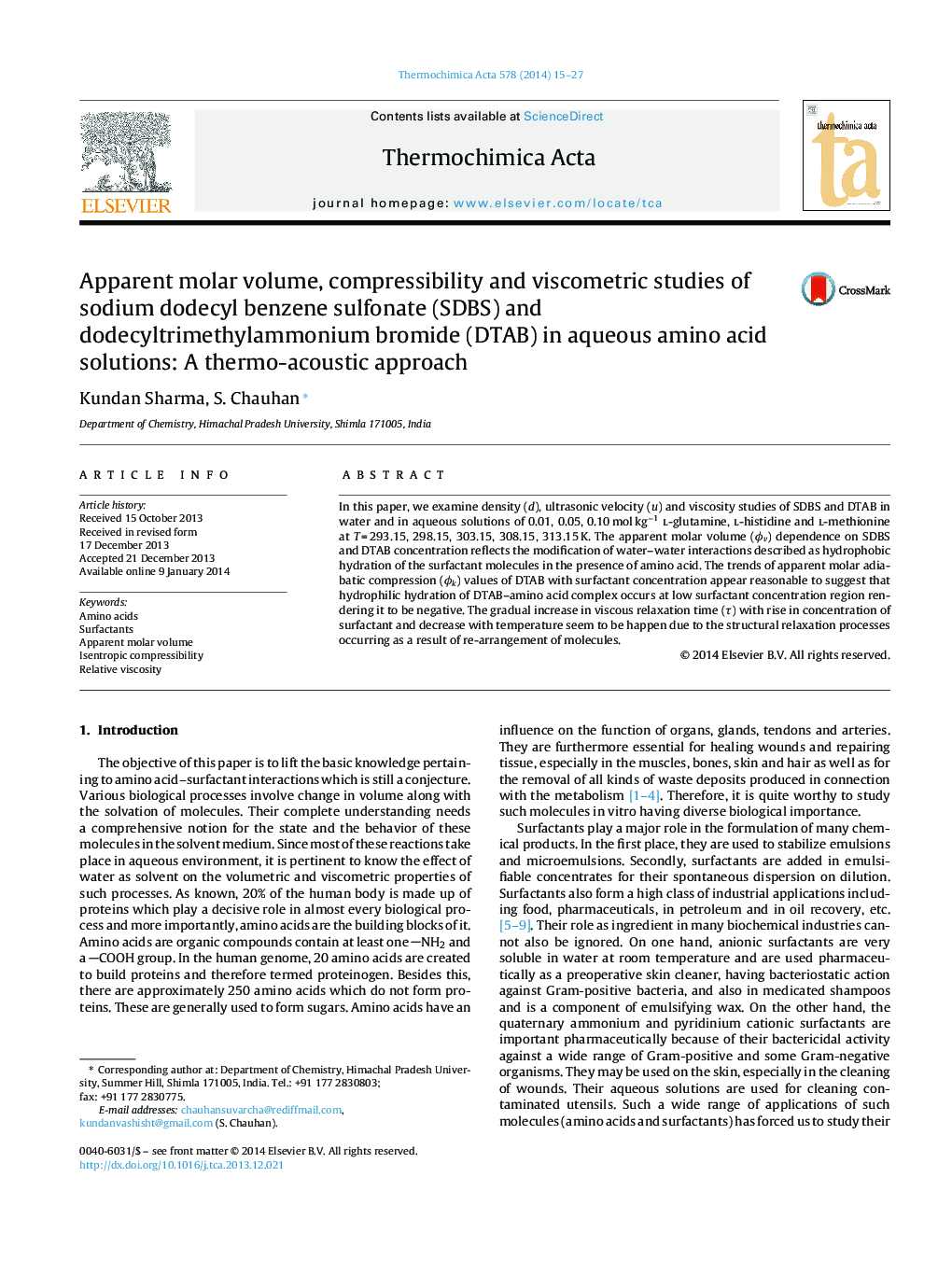| Article ID | Journal | Published Year | Pages | File Type |
|---|---|---|---|---|
| 673443 | Thermochimica Acta | 2014 | 13 Pages |
•Effect of temperature and additives on the industrially important surfactants has been explored.•Possible interactions have been presented in the form of graphical abstract.•Apparent molar volume and isentropic compressibility have been measured for surfactant–amino acid–water ternary system.•Viscosity data have been used to study relative viscosity and viscous relaxation time for the studied system.•Hydrophobic and hydrophilic dehydration have been discussed in detail.
In this paper, we examine density (d), ultrasonic velocity (u) and viscosity studies of SDBS and DTAB in water and in aqueous solutions of 0.01, 0.05, 0.10 mol kg−1l-glutamine, l-histidine and l-methionine at T = 293.15, 298.15, 303.15, 308.15, 313.15 K. The apparent molar volume (ϕv) dependence on SDBS and DTAB concentration reflects the modification of water–water interactions described as hydrophobic hydration of the surfactant molecules in the presence of amino acid. The trends of apparent molar adiabatic compression (ϕk) values of DTAB with surfactant concentration appear reasonable to suggest that hydrophilic hydration of DTAB–amino acid complex occurs at low surfactant concentration region rendering it to be negative. The gradual increase in viscous relaxation time (τ) with rise in concentration of surfactant and decrease with temperature seem to be happen due to the structural relaxation processes occurring as a result of re-arrangement of molecules.
Graphical abstractProposed hypothetical model representing the possible location of amino acid molecules inside the micelle milieu.Figure optionsDownload full-size imageDownload as PowerPoint slide
